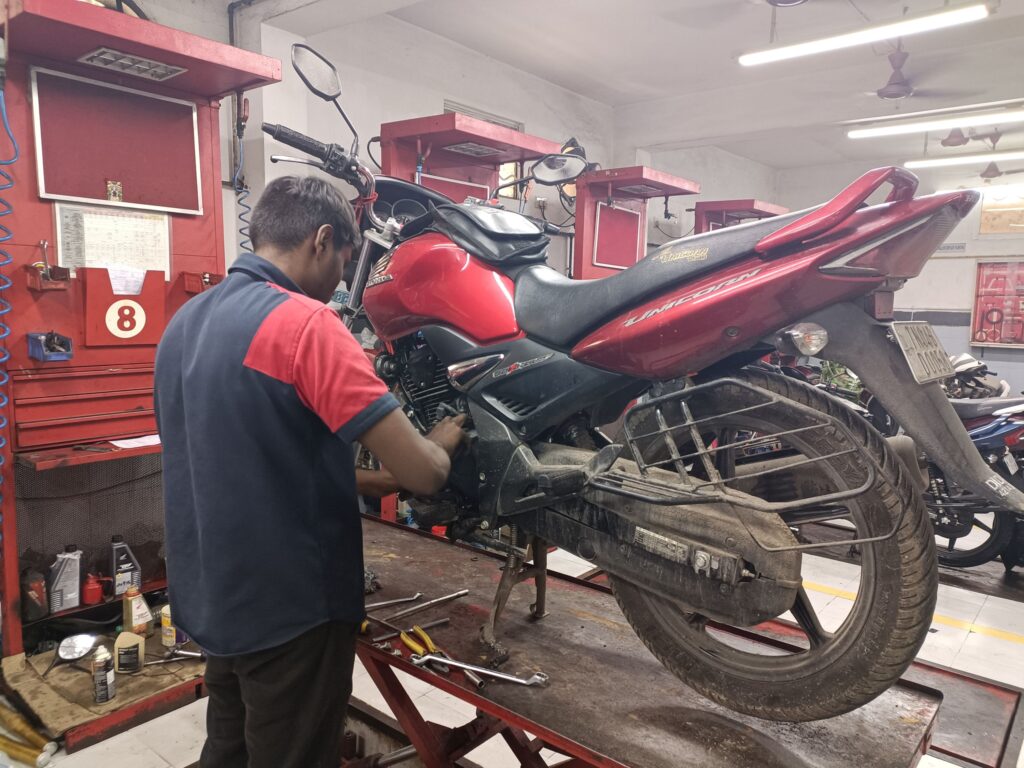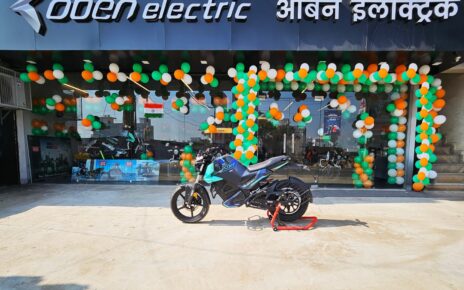In the bustling metropolis of Chennai, Didar Motors has established itself as a stalwart in the two-wheeler market, boasting nearly six decades of industry experience. From its early days partnering with brands like Escorts, Rajdoot, and Yamaha, to its current alliance with Honda Two Wheelers since 2001, Didar Motors has continually evolved to meet the demands of a growing customer base. In this exclusive interview by Raghul Sivaguru, we delve into the strategies, challenges, and future plans of Didar Motors with its leadership. Mr. K.B. Singh – Head Owner, Didar Motors shares his insights on market sentiment, customer expectations, and the importance of safety, as well as their approach to maintaining strong relationships with both customers and staff in an ever-changing market.
Considering the presence of Didar Motors in Chennai, what is the current business of your entire group and how is the market sentiment at present?
We have been in the two-wheeler business for almost 60 years now, with a customer base of around 600,000 in total. Initially, we began with Escorts, Rajdoot, and Yamaha. Since 2001, we have been associated with Honda Two Wheelers, starting exactly during the launch of Activa in India, where we were phase one dealers for Honda Two Wheelers. Due to this long-standing relationship, we are well known among our customers. In fact, many of our old customers now come to buy vehicles for their sons, grandsons, or other family members across generations.
The business sentiment in today’s market is positive, with a lot of customers and orders coming in. Customers are very specific about the model and colour they want. They prefer not to wait for delivery, so if we have the desired model and colour available immediately, they are happy. Otherwise, we risk losing potential customers. We strive to meet these requirements promptly.
Which segments does Didar Motors cater to and who are the OEMs with which you have partnered?
We exclusively partner with Honda Motorcycle and Scooter India Private Limited. We believe in focusing on one OEM to maintain a strong partnership. This collaboration between manufacturer and dealer is crucial for establishing a good reputation in the market. We have 5 Outlets across Chennai.

Is there any sales strategy and business model planned by Didar Motors to stay relevant and ahead of the competition?
Our sales strategies and business models vary depending on market conditions. It’s sometimes challenging to manage, but we do our utmost to ensure that all aspects align and meet the current scenario.
Considering that you are working specifically with Honda, how many dealerships do you have in Chennai, specifically with the sales, service, and spares facility (3S)?
The number of dealerships is determined by the population and city growth. There is no fixed minimum or maximum number of dealerships; it depends on the requirement. However, manufacturers ensure that new dealerships do not encroach on existing dealers’ territories.
Additionally, we go beyond the 3S model. While sales are crucial, after-sales service and customer safety are equally important. We educate our customers about safe driving practices to prevent mishaps. Although we can’t guarantee 100% safety, we emphasize this aspect.
Is there something to add about the driving schools and driving simulators?
We have a Riding trainer (driving simulator) in the showroom for customers to try out. It helps them learn how to make turns, park, check brakes and lights, and other essential safety practices. We also stress the importance of wearing helmets, not just for the rider but also for the pillion passenger.
Do you suggest that the pillion also wear a helmet or is it okay if it is as per their convenience?
Helmets should be mandatory for both the rider and the pillion. In case of an accident, the pillion is more likely to be thrown off the vehicle, making it crucial for them to wear a helmet for safety.
How do you handle vehicle inventory levels as a dealer chain, balancing OEM and customer perspectives in terms of bookings and waiting times?
Waiting periods occur occasionally, such as during the semiconductor issue, but they are not constant. We manage inventory levels by starting with smaller batches and gradually increasing based on customer demand. This approach helps us avoid excessive waiting times and maintain a balanced inventory.
For any dealer, after-sales service is a critical aspect. How do you ensure the best possible after-sales service in terms of quality, cost, and turnaround time, especially for customers using vehicles for e-commerce and delivery purposes?
After-sales service can be divided into several parts. For new vehicles, the initial service is quick, usually taking a couple of hours. For regular paid services, if customers maintain their vehicles regularly, major issues are less likely to arise. Delayed services may take longer, sometimes up to four days. Accident repairs and insurance claims can take about a week. We strive to keep a significant stock of spare parts, although maintaining 100% availability is challenging.
How do you view the impact of online vehicle sales by big OEMs like Mercedes Benz and two-wheeler companies like Hero and TVS on a traditional dealership setup like Didar Motors?
Online vehicle sales have not significantly impacted the two-wheeler market. Customers still prefer to visit showrooms, see the vehicle, test drive it, and be satisfied before making a purchase. This hands-on experience is essential for them.
How do you educate customers about extended warranties, roadside assistance programs, and other initiatives, especially low-mileage or low-usage customers?
While initiatives like roadside assistance and zero depreciation insurance are available, they come at an additional cost. Convincing low-usage customers can be challenging as they often feel they don’t need these services. We try to educate them about the benefits, but it is ultimately their decision.
How do you ensure profitability with the various systems in place for a showroom, such as CRM setup, sales management, and staff training?
We have a comprehensive software package that covers all aspects, making operations efficient. For profitability, each division (sales, service, spare parts, and safety) is treated as a separate business unit. By analyzing and improving each unit’s performance, we ensure overall profitability.
How do you maintain test drive vehicles at your dealerships? Do you have plans to include any new brands under the Didar Motors?
Currently, we do not have plans to include new brands. We maintain test drive vehicles by servicing them periodically. If a vehicle is unavailable for a test drive, we inform the customer and arrange for them to try it the next day.
How do you ensure the retention of sales staff, given that salary margins are slim among dealers?
Respect and treating staff well are crucial for retention. We have staff that are with us for 20 to 30 years. While the newer generation may seek better opportunities after gaining experience, we ensure a supportive work environment to encourage long-term retention.
Didar Motors has a separate division for used two-wheeler retail. How is the response to it? Do customers sometimes opt for a new vehicle instead of a used one?
The response to our used two-wheeler division depends on the customer’s budget. While many prefer new vehicles, those with budget constraints opt for used ones. Before COVID, we saw a significant boom, selling up to 1,500 new vehicles a month.




